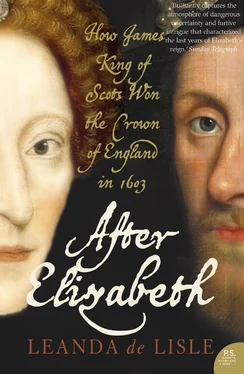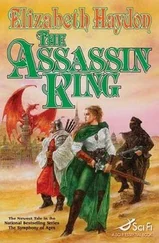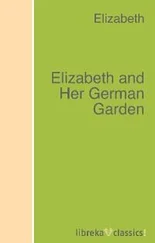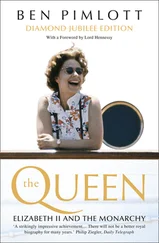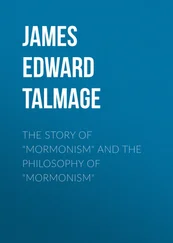Campion’s terrible death marked the beginning of the harshest yet period of repression. Those Catholics who refused to attend Protestant services – known as recusants (from the Latin recusare , to refuse) – faced ever more ruinous fines, while priests and those who harboured them were executed every year for the rest of Elizabeth’s reign. This did not stamp out Catholicism. Even three generations after the Reformation, Wales and the north of England remained predominantly Catholic. The west of England had a substantial Catholic minority and as much as 20 per cent of the entire nobility and gentry were Catholic. But it did radicalise Catholics and it also gained the sympathies of many young Protestant courtiers. The explosion of opinion and argument that followed the Reformation not only led to wars of religion, but also to the sceptical humanism of the late Renaissance. By 1602 it was illustrated in the works of Shakespeare and Montaigne, and found political expression in Henri IV’s secular state in France and a desire in English court circles for toleration of religion.
Harington, who although a Protestant, had many Catholic friends and relations, would refer to Campion’s death in his Tract with the comment that ‘men’s minds remain rather the less satisfied of the uprightness of the cause; where racks serve for reasons’. 27 It was, however, the older generation who remained in power in the 1580s and they remained convinced that the persecution was a matter of personal survival.
In 1584 Burghley and Elizabeth’s then Secretary of State, Sir Francis Walsingham, took steps to block Mary’s accession, drafting a so-called ‘Bond of Association’ whose members agreed to murder Mary if Elizabeth’s life was threatened. The wording indicated that if James VI claimed the throne his life would also be forfeit. Burghley had hoped to follow this with a neo-republican law that would bring a Great Council into effect on Elizabeth’s death with the power to choose her successor. Elizabeth put paid to that scheme, but in 1585 she did agree to sign a statute which decreed that anyone who plotted against her – or whose supporters plotted against her – would lose their right to the throne. 28 It was often used against James’s claim for in 1586 Mary was at last found in correspondence with a rich young Catholic traitor called Anthony Babington. In essence Babington and his co-conspirators were accused of planning a Catholic uprising backed by an invading army financed by Spain and the Pope. Elizabeth was to be deposed and assassinated. Here at last was the means for Burghley to dispose of Mary and, with the help of Walsingham, he seized it with both hands.
Mary was tried and convicted of her involvement in the Babington plot and in February 1587, at three strokes of the axe, the Protestant James VI became the leading Stuart candidate for the throne. The majority of Catholics conceded that all hope for the restoration of Catholicism had died with Mary, Queen of Scots. But some others – idealists, zealots and leading Jesuits – remained determined to have a Catholic monarch, if necessary by force of arms. And already the numbers of Elizabeth’s possible heirs were increasing.
Mary, Queen of Scots made Philip II of Spain a written promise that she would bequeath him her right to the English succession the year before her execution. In the event she never did so, but her death left him the leading Catholic candidate for the succession. As a descendant of John of Gaunt and Edward III he had English royal blood, as king of the greatest power in Europe he had the might to back his right, and in 1587 he was already building the Armada with which he intended to invade England.
Elizabeth needed allies in Europe, but at fifty-four she was too old to gain them by offering her hand in a marriage alliance. She had therefore introduced a new candidate for the succession: James’s English-born first cousin, the eleven-year-old Arbella Stuart, who remained a serious rival to his claim. Her father, Charles Stuart, was the younger brother of Mary, Queen of Scots’s husband, Henry Darnley. She was therefore a great-great-granddaughter of Margaret Tudor. Her mother was the daughter of a courtier called William Cavendish whose formidable wife, known to posterity as Bess of Hardwick, remained her guardian.
Bess had been a friend of Catherine Grey and she had used the example of Catherine’s marriage to plan that of her daughter Elizabeth with Charles Stuart. They too were married in secret, but Bess made sure that this union had plenty of witnesses. It never paid out the prize of a male heir, but Arbella was legitimate, royal and English born. When Arbella was orphaned at the age of six in 1581, Bess – who was then married to the sixth Earl of Shrewsbury – took her in and gave her a Protestant education suitable for a future ruler. Elizabeth, in addition to seeing her as a pawn in European politics, saw her rather as a useful counterpoint to James’s ambitions and she was the focus of considerable curiosity when Elizabeth invited her to court early in the summer of 1586. Elizabeth was then based at Burghley’s palace, Theobalds, in Hertfordshire, where the Earl of Essex had begun to supplant Sir Walter Ralegh as the Queen’s favourite.
Arbella arrived at court accompanied by her Cavendish aunts and uncles, a slim, full-faced girl with dark blonde hair and slightly bulging blue eyes. Elizabeth allowed her the honour of dining in the Presence Chamber and courtiers showered the eleven-year-old with attention. Essex had talked to Arbella loudly of his devotion to the Queen and Burghley invited her to supper. Arbella went accompanied by her youngest uncle, Charles Cavendish, who reported all that passed in a letter to his mother. 29 Ralegh, whose fate would later become strangely bound up with Arbella’s, was sitting next to Burghley, the elder statesman with his long grey beard, Ralegh, dark and sleek, ‘long faced and sour-eye lidded’. 30 Cavendish was struck by how polite, even ingratiating, Ralegh was with Burghley: the fading favourite needed a powerful ally to match the support that Essex had in his stepfather, Elizabeth’s first and greatest love, the ageing Earl of Leicester.
Burghley ‘spoke greatly in Arbella’s commendation, as that she had the French and the Italian; danced and writ very fair’ and wished ‘she were fifteen years old’. Cavendish then saw him whisper in Ralegh’s ear. Ralegh replied in his distinctive low voice and Devonshire accent ‘it would be a happy thing’. 31 The two men appeared to be discussing a possible marriage. The name soon circulating as the most likely groom was that of Rainutio Farnese, son of the Duke of Parma, Philip II’s Lieutenant in the Spanish Netherlands, and, like him, a descendant of John of Gaunt. Elizabeth hoped that personal ambition might dull Parma’s effectiveness in the coming invasion. She also hoped that the promise of marrying Arbella to a Catholic might salve feeling about the death of Mary, Queen of Scots and, with this in mind, she advertised to the French ambassador’s wife that Arbella ‘would one day be as I am’. The ambassador duly reported the conversation home, observing that Arbella ‘would be the lawful inheritress of the crown if James of Scotland were excluded as a foreigner’. 32
Childish and spoilt Arbella was delighted ‘that it pleased her Majesty to … pronounce me an eaglet of her own kind’, but she would soon discover that her position depended on the prevailing political climate. When the Armada was defeated in August 1588, Arbella ceased to be seen as useful, though she failed to sense the change in her circumstances and continued to play the role of Elizabeth’s heir. On one notorious occasion she insisted on taking precedence over all the other ladies at court. Elizabeth seized on it as an excuse to order her to return home to Derbyshire.
Читать дальше
